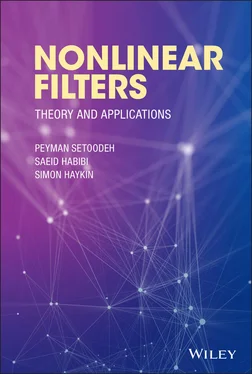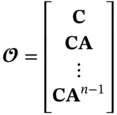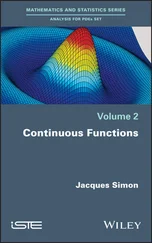Simon Haykin - Nonlinear Filters
Здесь есть возможность читать онлайн «Simon Haykin - Nonlinear Filters» — ознакомительный отрывок электронной книги совершенно бесплатно, а после прочтения отрывка купить полную версию. В некоторых случаях можно слушать аудио, скачать через торрент в формате fb2 и присутствует краткое содержание. Жанр: unrecognised, на английском языке. Описание произведения, (предисловие) а так же отзывы посетителей доступны на портале библиотеки ЛибКат.
- Название:Nonlinear Filters
- Автор:
- Жанр:
- Год:неизвестен
- ISBN:нет данных
- Рейтинг книги:5 / 5. Голосов: 1
-
Избранное:Добавить в избранное
- Отзывы:
-
Ваша оценка:
Nonlinear Filters: краткое содержание, описание и аннотация
Предлагаем к чтению аннотацию, описание, краткое содержание или предисловие (зависит от того, что написал сам автор книги «Nonlinear Filters»). Если вы не нашли необходимую информацию о книге — напишите в комментариях, мы постараемся отыскать её.
Discover the utility of using deep learning and (deep) reinforcement learning in deriving filtering algorithms with this insightful and powerful new resource Nonlinear Filters: Theory and Applications
Nonlinear Filters
Nonlinear Filters: Theory and Applications


 must have negative real parts (
must have negative real parts (  must be Hurwitz ).
must be Hurwitz ).

 ,
,  , and
, and  are the state, the input, and the output vectors, respectively, and
are the state, the input, and the output vectors, respectively, and  ,
,  ,
,  , and
, and  are the system matrices. Starting from the initial cycle, the system output vector at successive cycles up to cycle
are the system matrices. Starting from the initial cycle, the system output vector at successive cycles up to cycle  can be written based on the initial state vector
can be written based on the initial state vector  and input vectors
and input vectors  as follows:
as follows:



 , matrix
, matrix  must be full‐rank, provided that inputs and outputs are known. In other words, if the matrix
must be full‐rank, provided that inputs and outputs are known. In other words, if the matrix  is full rank, the linear system is observable or reconstructable, hence, the reason for calling
is full rank, the linear system is observable or reconstructable, hence, the reason for calling  the observability matrix . The reverse is true as well, if the system is observable, then the observability matrix will be full‐rank. In this case, the initial state vector can be calculated as:
the observability matrix . The reverse is true as well, if the system is observable, then the observability matrix will be full‐rank. In this case, the initial state vector can be calculated as:
 depends only on matrices
depends only on matrices  and
and  , for an observable system, it is equivalently said that the pair
, for an observable system, it is equivalently said that the pair  is observable. Any initial state that has a component in the null space of
is observable. Any initial state that has a component in the null space of  cannot be uniquely determined from measurements; therefore, the null space of
cannot be uniquely determined from measurements; therefore, the null space of  is called the unobservable subspace of the system. As mentioned before, the system is detectable if the unobservable subspace does not include unstable modes of
is called the unobservable subspace of the system. As mentioned before, the system is detectable if the unobservable subspace does not include unstable modes of  , which are associated with the eigenvalues that are outside the unit circle.
, which are associated with the eigenvalues that are outside the unit circle. , is composed of the basis vectors of the range of
, is composed of the basis vectors of the range of  , the unobservable subspace of the linear system, denoted by
, the unobservable subspace of the linear system, denoted by  , is composed of the basis vectors of the null space of
, is composed of the basis vectors of the null space of  . These two subspaces can be combined to form the following nonsingular transformation matrix:
. These two subspaces can be combined to form the following nonsingular transformation matrix:
 such that:
such that:











